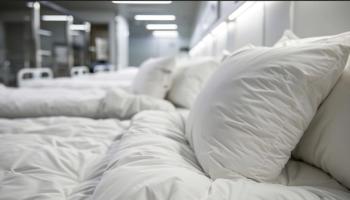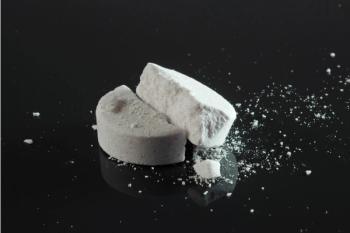
Overdoing Niacin Can't Thwart Drug Abuse Tests and Is Risky
PHILADELPHIA -- Those who try to foil urine drug tests with massive doses of niacin -- it doesn't work -- may wind up in a hospital emergency department.
PHILADELPHIA, April 12 -- Those who try to foil urine drug tests with massive doses of niacin -- it doesn't work -- may wind up in a hospital emergency department.
Life-threatening adverse reactions beyond just the typical skin flushing and itchiness included liver toxicity, acidosis, and even disrupted heart rhythms at niacin doses 100 to 500 times the 15-mg daily recommended value, said Manoj K. Mittal, M.D., of the Children's Hospital of Philadelphia, and colleagues.
Four such cases -- two adults and two teenagers -- were seen in emergency departments in two years in the university health care system after trying to dodge a screen for illegal drugs, they reported online in the Annals of Emergency Medicine. What's more, Dr. Mittal added, niacin overdosing is an exercise in futility in trying to fool the tests.
While there is no biological basis for niacin's putative drug clearing effect, the myth may have gotten started by individuals who took the vitamin's "flushing" and metabolism effects out of context, Dr. Mittal and colleagues said.
Iin an editorial that will accompany the print version of the study, Kennon Heard, M.D., and Carrie D. Mendoza, M.D., both of the Rocky Mountain Poison and Drug Center, wrote that this number of cases in a single system suggests that niacin overdosing may be fairly common to try to evade urine drug tests.
With tens of thousands of Web pages discussing this misguided use of niacin, "we expect there will be many more cases of niacin toxicity in the next few years," Drs. Heard and Mendoza added.
"With the proliferation of urine drug testing by prospective employers and various government agencies, more patients with niacin toxicity may present to emergency departments," Dr. Mittal and colleagues wrote.
Both adults -- a 23-year-old man who abused cocaine and a 22-year-old woman who abused marijuana -- took niacin before scheduled pre-employment urine drug tests. They were seen in the emergency department for niacin's characteristic skin flushing and burning in one case and itchy erythematous rash in the other, but the reactions resolved spontaneously.
Nevertheless, "in the absence of an appropriate medical history, this reaction can be misdiagnosed as anaphylaxis or hypersensitivity reaction and treated inappropriately," Dr. Mittal and colleagues cautioned.
The 14-year-old boy and 17-year-old girl who tried the same thing had worse consequences.
In an attempt to mask marijuana use from his parole officer, the previously healthy boy took 11 tablets of 500-mg timed-release niacin over three days. He arrived at the emergency department with nausea, vomiting, upper abdominal pain, palpitations, and dizziness.
Initially, he had hypoglycemia (26 mg/dL) that then switched to hyperglycemia when he was given dextrose (207 mg/dL). His liver function was abnormal as well with alanine aminotransferase levels that peaked on day four of hospitalization at 344 IU/L (normal range 10 to 45 IU/L) and aspartate aminotransferase levels that peaked on day three at 193 IU/L (normal range 15 to 40 IU/L). He had "impressive neutrophilia" and high-anion-gap metabolic acidosis that resulted in a misdiagnosis of diabetic ketoacidosis.
Furthermore, he had heart rhythm abnormalities. On electrocardiogram, his QT interval was 378 ms with a prolonged QT corrected interval of 511 ms, which was "probably related to the patient's severe metabolic acidosis."
Likewise, the girl took five 500-mg tablets of niacin over two days to clear her urine of marijuana and "ecstasy" but wound up in the hospital for nausea, vomiting, dizziness and brief unresponsiveness.
She also had high-anion-gap metabolic acidosis as well as initial hypoglycemia (70 mg/dL) that became hyperglycemia after administration of dextrose (peak 222 mg/dL). However, she did not have elevated hepatic enzymes.
Both demonstrated coagulopathy. The peak prothrombin time was 18.8 seconds for the boy and 23.1 seconds for the girl (normal range 10.3 to 12.8 seconds). The INR peaked at 1.74 on day three for the boy and 3.8 for the girl.
The "puzzling dysglycemia" was likely due to dual metabolic effects of niacin. It inhibits breakdown of stored fat, which in the setting of prolonged vomiting would have explained the initial hypoglycemia. Niacin also induces insulin resistance, so correction of hypoglycemia with dextrose "unmasked" this effect leading to hyperglycemia.
Ironically, drug screening tests turned up positive for both patients despite extreme niacin overdose, Dr. Mittal said.
While both patients improved in a few days with supportive care once niacin intake ceased, the cases suggest that healthcare providers should be aware in their differential diagnosis of misguided use of niacin among patients trying to interfere with urine drug screening, the researchers said.
"Emergency physicians should consider attempts to mask urine drug screens as a cause of unusual presentations in high-risk populations, such as military, patients on probation and with a history of drug abuse," Drs. Heard and Mendoza wrote in their editorial.
However, "a much wider population is at risk than what is implied there," Dr. Mittal and colleagues said, because any government job, all big employers, and those who participate in sports, among others, require urine screening.
"Health care providers should be aware of these potential adverse effects of niacin and of the misguided use of this vitamin by patients seeking to interfere with urine drug screening," they added..
When reviewing their poison center's records for an eight month period in 2006, Drs. Heard and Mendoza found that 15% of niacin-related were due to the use of niacin to mask drug abuse or to "purify or cleanse their system."
In addition to these 16 callers, 12 callers reported adverse reactions under "circumstances?suspicious for use related to masking drug screens." Only half of all these individuals were treated in a healthcare facility.
Together, the findings "suggest that niacin toxicity while attempting to mask urine drug screens may be a growing problem," they wrote.
Newsletter
Enhance your clinical practice with the Patient Care newsletter, offering the latest evidence-based guidelines, diagnostic insights, and treatment strategies for primary care physicians.
















































































































































































































































































